Scale, great documentation, great response from the support team, and the rule engine as ‘killer feature'.
- Leon Bouwmeester, Product Manager IoT at Signify.
Abstract
The Internet of Things (IoT) has changed how we interact with and manage smart devices. Signify is a pioneer in smart lighting solutions. Using EMQX to integrate MQTT communications with Signify provides real-time state data, and simplifies the management of smart devices at scale.
Signify (formerly known as Philips Lighting) stands as a global leader in lighting and smart home solutions, employing over 35,000 people and operating in more than 180 countries. Dedicated to unlocking the extraordinary potential of light for brighter lives and a better world, Philips Hue, one of Signify’s brands, delivers millions of smart and connected light bulbs to customers annually. Beyond the impressive lighting capabilities, the distinctive features of the underlying IoT platform include low latency and high availability at a large scale, achieved cost-effectively.
“Given that we manage one of the largest fleets of IoT devices in the world, scale and availability mean everything to us.” – Leon Bouwmeester, Product Manager IoT at Signify.
Challenge
Signify has millions of smart bulbs in homes worldwide. That number continues to grow as they add new devices to their smart lighting and home security solutions. Signify is expecting a significant increase in connected devices in the next year. The challenge was to upgrade the current infrastructure to support the growth rate of new devices and unlock future use cases while maintaining support for legacy devices and enhancing communication across its entire IoT fleet.
Introducing MQTT for Massive Connected Devices Management
Central to EMQX's strength is the MQTT protocol, a lightweight and efficient messaging solution designed for resource-constrained devices. MQTT efficiently reduces network bandwidth and power consumption, making it the ideal solution for IoT applications that prioritize scale, quality of service, and time to market.
Key Features of MQTT:
- Publish-Subscribe Model: Facilitates efficient device communication at scale.
- Quality of Service (QoS) Levels: Ensures message delivery once, at least once, or at most once.
- Last Will and Testament: Sends a message after unplanned disconnections.
- Low Overhead: Reduces network resource usage.
Enhancements Through the EMQX Platform’s Rule Engine
One of the “killer” features of the EMQX Platform is the rule engine. Its SQL-like syntax makes it easy to add logic for filtering, transforming, and distributing data. The Flow Designer provides a visual representation of the rules and data integrations, making it easy to monitor the status and troubleshoot rules. Together, the Rule Engine and Flow Designer ease IoT application development by offering pre-built data integrations that can be dragged onto the flow editor and configured with little or no code.
“Scale, great documentation, great response from the support team, and the rule engine as ‘killer feature'.” – Leon Bouwmeester, Product Manager IoT at Signify.
In smart home automation, the rule engine can automate tasks such as turning on lights when someone enters a room or adjusting the thermostat based on the time of day. This can improve energy efficiency and add new functionality to smart devices.
EMQX Integration with Signify
Architecture:
Signify’s scheme connects EMQX to the Philips Hue bridge. Through EMQX, smart devices such as bulbs and controllers communicate in real-time, allowing fluid interaction between the Philips Hue lighting system and Cloud Services.

The Hue bridge starts and connects with the provisioning services to receive credentials for linking with EMQX. The bridge then establishes a permanent connection to EMQX, through which configuration, state, and messages related to the bridge are exchanged. This connection allows for the sharing of information about other cloud services, including their configuration, as well as notifications about new software versions, among other updates.
Benefits of Integration:
MQTT enables low-latency communication between devices, allowing for swift state and configuration adjustments for a smooth user experience. It provides highly reliable and consistent communication in real-time. The scalable and flexible architecture of the EMQX Platform supports tens of millions of connected smart devices without any drop in performance.
Conclusion
Integrating the EMQX MQTT platform with Signify marks a powerful collaboration between lightweight, efficient communication and smart lighting technology. This collaboration enhances IoT fleet management capabilities and elevates the overall user experience, establishing a compelling solution for the future of intelligent lighting systems. As smart home ecosystems grow from millions to billions of devices, the union of EMQX and Signify paves the way for scalable and responsive IoT applications.
